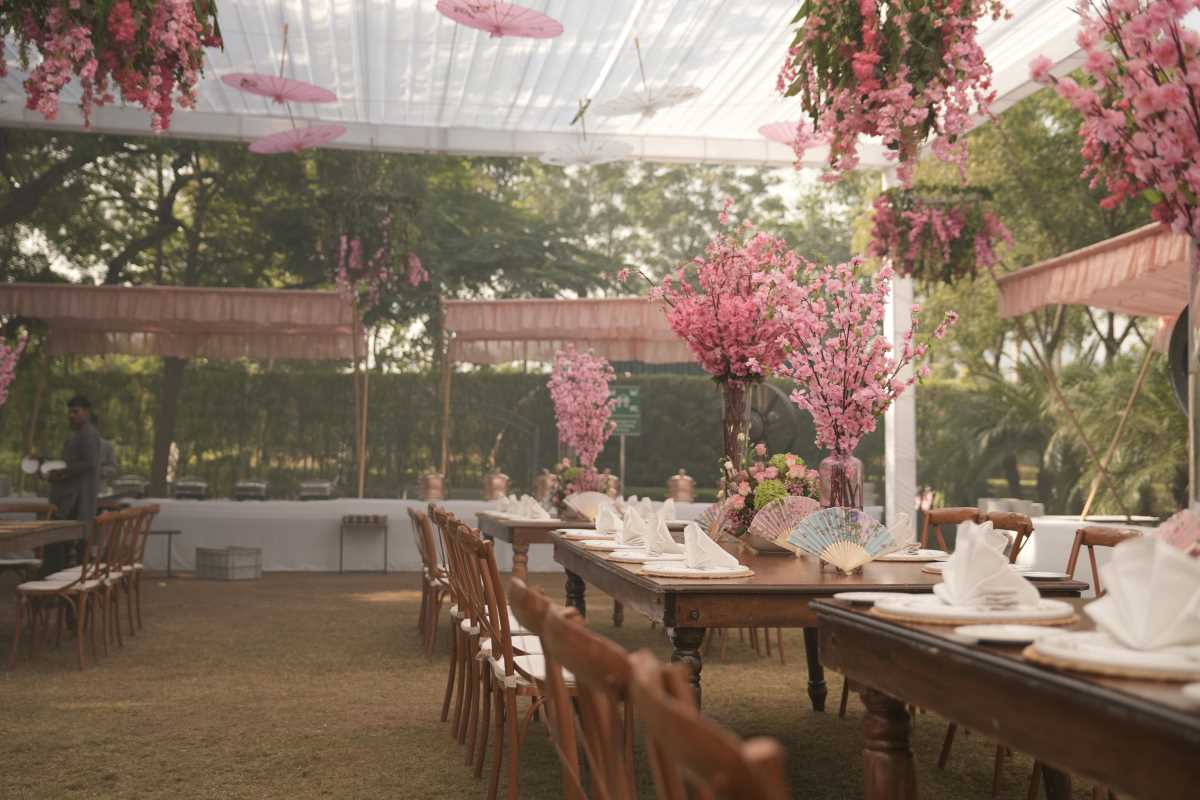A thoughtful seating arrangement can help your wedding day run smoothly while ensuring everyone feels comfortable and connected. But figuring out where to seat all your family, friends, and other guests can be tricky. From deciding who sits close to the action to avoiding awkward pairings, creating your seating chart requires a mix of practicality and emotional intelligence. With a little planning and some helpful strategies, you can create a seating arrangement that your guests (and you!) will love.
Here’s how to make it happen.
1. Start Early and Get Organized
One of the biggest keys to building a successful seating arrangement is giving yourself plenty of time. Start planning as soon as you have an accurate guest list and RSVPs in hand. The sooner you begin, the less stress you’ll have as the big day approaches.
Steps to get organized:
- Finalize your guest count: Wait until you’ve received most (if not all) your RSVPs to avoid reworking your chart multiple times.
- Confirm your table setup: Work with your venue or planner to understand the table arrangement (round, rectangular, etc.) and how many people can sit at each table.
- Use planning tools: Digital apps like AllSeated or The Knot’s seating chart tool can make creating and visualizing your layout far easier than doing it all by hand.
By starting early with a clear system, you make room to handle last-minute updates (because surprises always happen!).
2. Group Guests by Connections
The easiest way to start forming a seating plan is by grouping your guests based on their relationships. Think about who knows each other, who will enjoy each other’s company, and how different dynamics might play out.
Common groupings:
- Family tables: Seat close family members together (parents, siblings, grandparents), but consider blending both sides of the family to encourage mingling.
- Friend groups: Keep friend circles intact to ensure your guests feel comfortable and have a great time.
- Coworkers: If you’ve invited work friends, seat them together so no one feels out of place.
- Plus-ones: Don’t forget to include seats for guests’ significant others or plus-ones, balancing them with groups where they’re likely to fit in easily.
How to avoid tricky situations:
- If certain family members don’t get along, it’s okay to seat them at different ends of the room. Instead of forcing interaction, focus on creating a pleasant atmosphere for everyone.
Organizing by connections ensures that guests feel naturally comfortable, making conversation flow more easily.
3. Balance Personalities at Each Table
While keeping groups together is important, variety can also work wonders. If you’re confident certain guests will hit it off, mix and match people with complementary personalities to spice things up. This approach is especially helpful for smaller weddings where mingling is encouraged.
Examples of balancing seating:
- Outgoing guests: Pair extroverts with quieter attendees to keep the table lively without overwhelming anyone.
- Common interests: Seat people who share hobbies, careers, or life stages together. For example, new parents might enjoy sitting with others who have young kids.
- Spacing for introverts: Give shy or reserved guests extra breathing room by placing them in areas with less foot traffic or fewer strangers.
Thoughtful pairing can help every table feel dynamic and interactive instead of one-note.
4. Prioritize Special Guests and Needs
Some guests deserve a little extra attention when it comes to seating to ensure their experience is as smooth and enjoyable as possible. Whether it’s comfort or visibility, a few adjustments can make a big difference.
Special considerations:
- Parents and grandparents: Typically, immediate family sits closest to the head table. Give older guests an upfront view of key moments like dances and speeches.
- Guests with mobility issues: Place elderly guests or anyone requiring accommodations near entrances, restrooms, or wheelchair-accessible paths.
- Families with children: Seat families with young kids near exits for easier access if they need to step out. You might also consider a kids’ table with fun activities or special treats.
- Dietary needs: If there’s assigned seating, make sure guests with specific allergies or food preferences are placed where catering staff can easily meet their needs.
Taking the time to consider special circumstances shows thoughtfulness and adds to your guests’ comfort.
5. Deciding on Assigned vs. Open Seating
The great debate of seating arrangements comes down to this choice: Should you assign specific seats, general tables, or leave it totally open? The option you choose depends on your wedding style, venue, and guest list.
Assigned seating advantages:
- Organization: Cuts down on confusion and ensures every guest has a spot.
- Smooth dining service: Caterers can accommodate meal preferences (e.g., vegetarian options) more easily.
- Peace of mind: Reduces mingling stress for guests who might not know many people.
Open seating perks:
- Casual vibes: Works well for informal or rustic weddings, allowing guests to choose where they feel most comfortable.
- Simple setup: Skips the need for escort cards or detailed charts.
If you’re worried about guests feeling lost with open seating, consider creating a hybrid format. Assign tables based on groupings, but skip specific seat assignments at each table.
6. Use Tools to Simplify Charting
Since adjusting tables and arrangements can feel overwhelming, take advantage of tools and visual aids to make the process easier. Seeing the big picture can help you get things just right.
Helpful seating tools:
- Poster boards: Write names on sticky notes and move them around to test different combinations.
- Digital apps: Platforms like AllSeated allow you to drag and drop guests into virtual table layouts, offering a visual overview of your arrangement.
- Printed layouts: Sketch a rough draft on paper to get started, and refine it as RSVPs come in.
A clear system saves time and prevents unnecessary frustration as you refine your chart.
7. Make Escort Cards and Signage Easy to Follow
On the big day, helping your guests find their seats should be smooth and stress-free. This is where escort cards, place cards, or seating charts come into play. Make them fun, clear, and organized.
Options for guiding guests:
- Escort cards: Provide each guest with a card that lists their table number, leaving freedom for them to choose their seat at the table.
- Seating charts: Use a large sign or poster at the entrance to display table assignments by name.
- Place cards: If using assigned seats, place cards on the table help guests find their exact spot. Personalize them with designs, names, or even little thank-you notes.
Choose the method that best fits your wedding style and logistics for easy navigation.
8. Make Room for Flexibility
Even with the best planning, some last-minute changes may pop up. Whether it’s unexpected guests or canceled RSVPs, leave room to adapt.
Tips for staying flexible:
- Keep a couple of extra seats or a small table reserved for unplanned attendees.
- Seat late arrivals in areas where they can quietly slip in without disrupting the flow.
- Be open to reworking the arrangement if necessary—but remember that it doesn’t need to be perfect for guests to enjoy themselves.
Having a backup plan ensures you stay calm and steady no matter what surprises come your way.
 (Image via
(Image via





